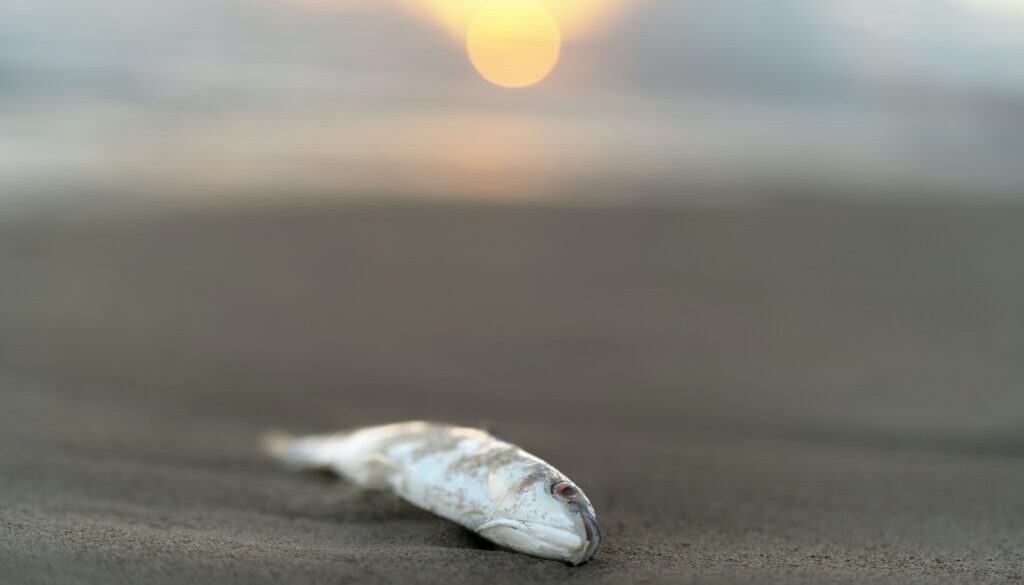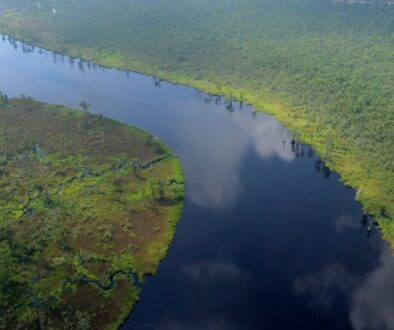Effects of “unprecedented” marine heat waves may be irreversible
Tens of thousands of dead fish are washing up on the Texas Gulf Coast, unprecedented numbers of seabird carcasses are showing up on beaches, and toxic algal blooms are growing in size and frequency: all signs of the calamitous impacts of warming trends for ocean waters that some scientists say may be irreversible.
July marked Earth’s hottest temperatures ever, and heat waves are currently affecting over 44% of ocean area, making the current marine heat wave the most widespread ever recorded. Scientists at the National Oceanic and Atmospheric Administration (NOAA) expect that number to rise to over 50% by this fall. Usually, about 10% of the world’s oceans experience a heatwave at any given time.
The levels of marine heat waves this year are “unprecedented,” said Dillon Amaya, a scientist who studies climate extremes at the NOAA.
The marine heat wave could lead to a redistribution of ocean species that may then also destabilize additional ecosystems, according to Jenn Caselle, a research biologist at the University of California, Santa Barbara’s Marine Science Institute.
“These marine communities that are reshuffling right now could stay in those reshuffled states and become our new normal,” said Caselle.
Cascade of problems
Concern for coral is one example of the cascade of problems that can occur. Bleached corals can spell death for fish and invertebrates that rely on coral ecosystems for food and shelter. Once corals are bleached, they rarely recover.
From 2013-2017, a heat wave wreaked havoc in the Pacific, driving large numbers of sea urchins north to cooler waters where they fed on kelp, ultimately decimating kelp populations in the waters off of Northern California. The current Pacific heat wave has a similar potential to cause a reshuffling of marine life, with wildlife that prefers warmer water replacing that which prefers colder water, said Caselle.
The redistribution of species also effects humans. The kelp decimation during the 2013-2017 Pacific heat wave triggered a decline in abalone populations, cutting off the California abalone fishing industry.
In the Northeast, the redistribution effect has meant that some species are moving outside of areas where fishermen are permitted to catch them, said Vincent Saba, a fisheries scientist with NOAA’s Northeast Fisheries Science Center. For example, populations of summer flounder, one of the most sought-after commercial fish in the Atlantic, have shifted northward, threatening the livelihoods of fishing communities.
Similar issues among commercial species are likely to arise as more widespread marine heat waves happen, said Caselle. “It’s going to take human communities some time to adapt.”
Shifting baselines
While this year’s heat waves are extreme weather events compared to a few decades ago, they’re not actually abnormal compared to current climate conditions. Ocean temperatures have warmed about 0.12 degrees Fahrenheit per decade since pre-industrial times, meaning that ocean temperatures that seemed extreme decades ago are becoming common today, according to a paper published in the journal Nature in April.
“This is the new normal,” said Saba, one of the authors of the Nature paper.
Conservation actions, such as protecting wide areas of the ocean from fishing, can only do so much to prevent ecosystem disturbance from such heat waves, according to a study published by Caselle this month. The most important way to protect the oceans from heat effects is to halt climate change as quickly as possible, she said.
Most Americans, however, don’t consider climate change or the environment as a top concern, according to recent polling. And scientists agree that the current actions world governments have taken to halt climate change are not sufficient to keep warming under the limits set by the 2016 Paris Agreement.
“We can build all the marine protected areas in the world, and we can try to convince the fisheries managers to be proactive in the face of loss,” said Caselle. “But if we don’t stop burning fossil fuels and emitting, there’ll be a point where there’s only so much we can do,” she said.
 EWG
EWG


